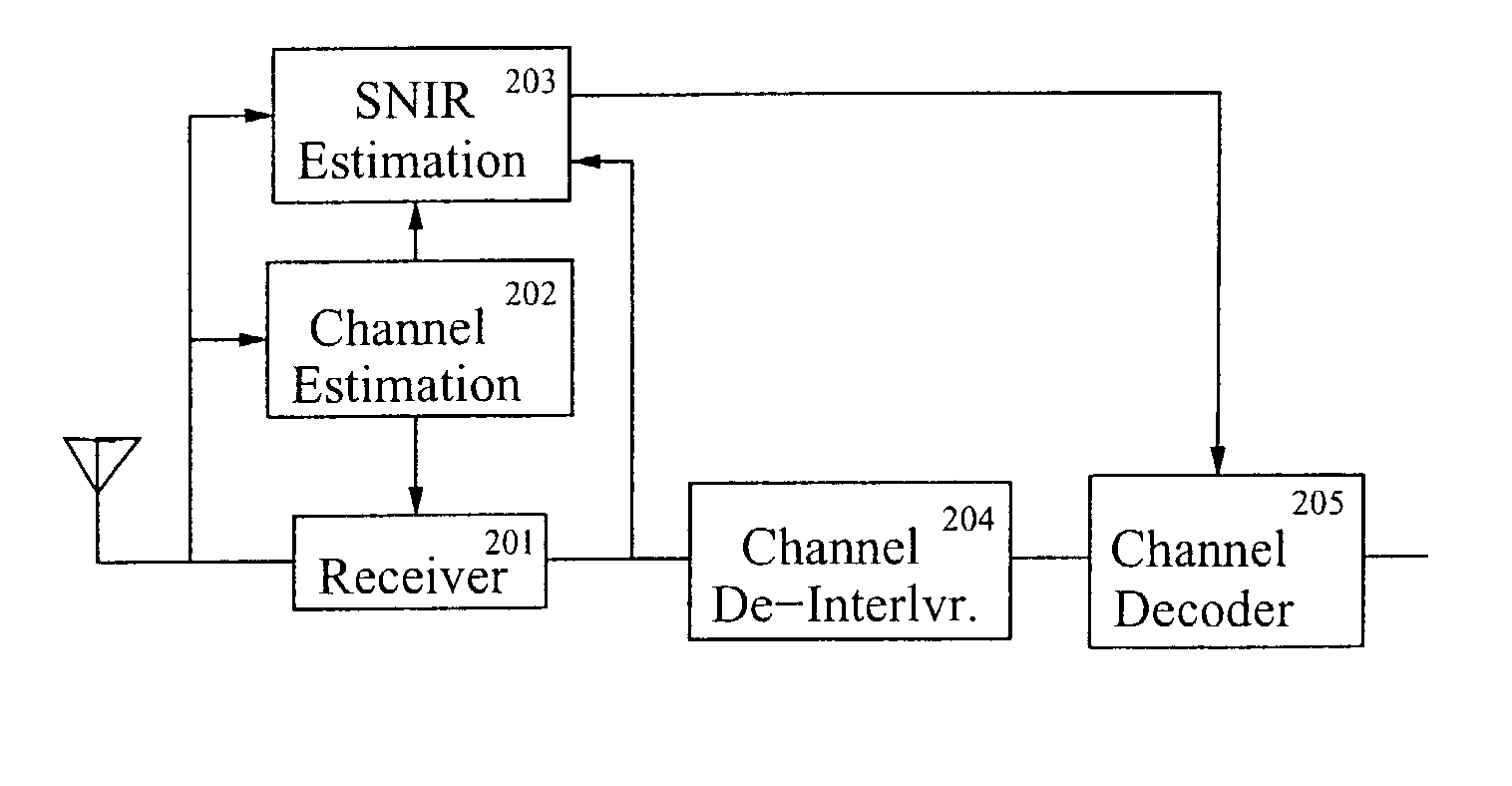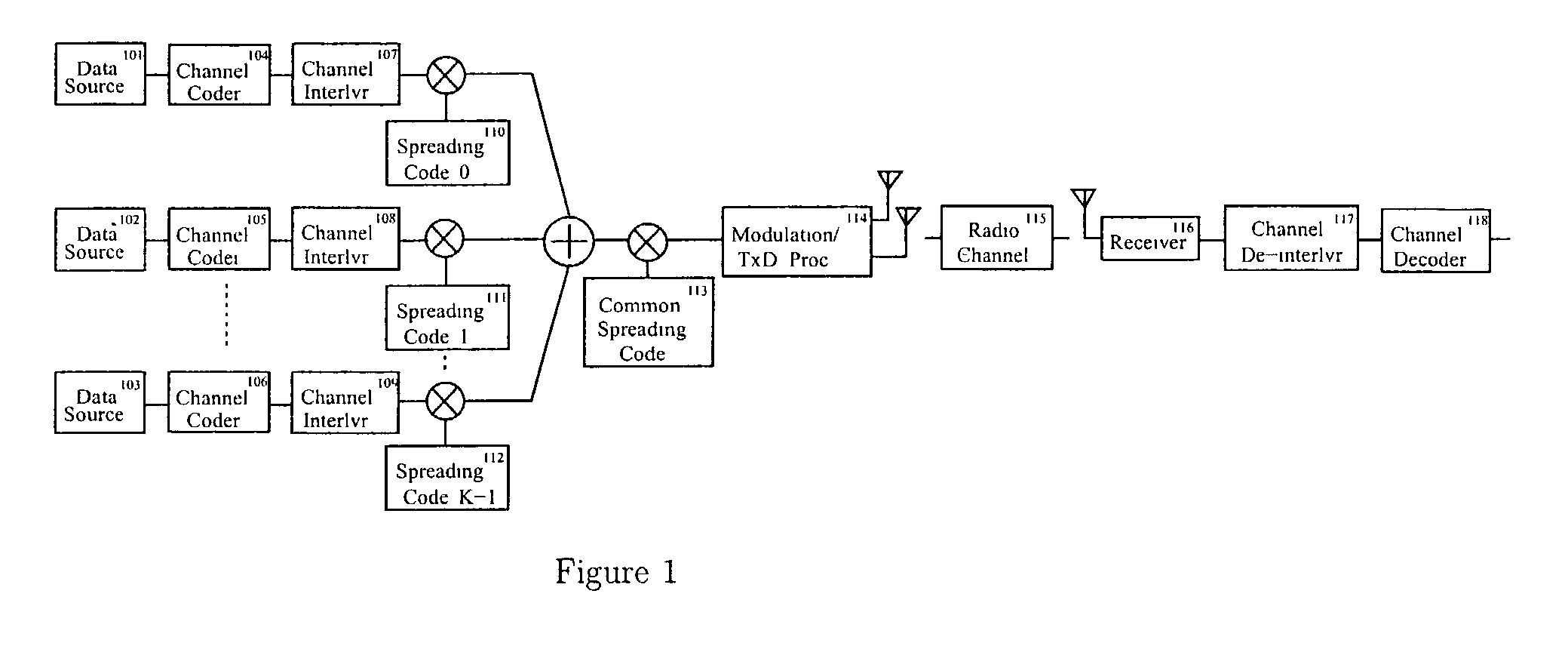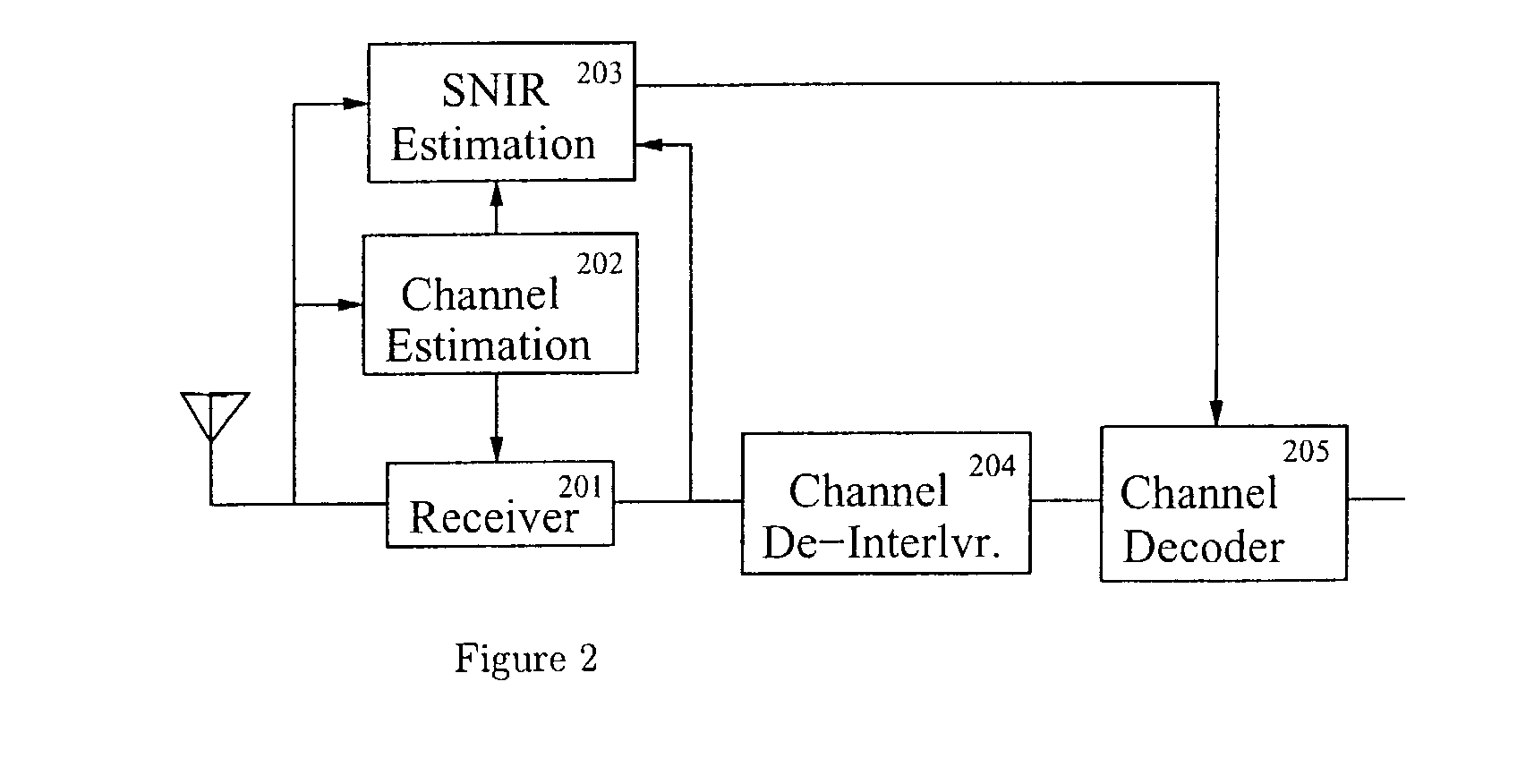Channel code decoding for the CDMA forward link
a forward link and channel code technology, applied in the direction of transmission, wireless communication, electrical equipment, etc., to achieve the effect of improving error correction performance and improving accuracy of estimates
- Summary
- Abstract
- Description
- Claims
- Application Information
AI Technical Summary
Benefits of technology
Problems solved by technology
Method used
Image
Examples
Embodiment Construction
[0014]The signal to interference plus noise ratio at the output of receiver block 116 during encoded symbol interval i can be written as γi=Ei / σ2(i) where Ei is the energy of the received encoded symbol and σ2(i) is the variance of the interference and noise corrupting that symbol. An estimate of Ei is calculated using conventional techniques described below. This invention improves the accuracy of γi through a new technique for calculating σ2(i) that separately accounts for the in-cell interference and out-of-cell interference plus thermal noise levels on the CDMA forward link.
[0015]The desired signal received by a CDMA mobile is corrupted by three processes: in-cell interference, out-of-cell interference and thermal noise. In-cell interference is corruption from the other signals transmitted by the base station or base stations communicating with the mobile. In soft or softer handoff, all the base stations participating in the handoff produce in-cell interference. Out-of-cell inte...
PUM
 Login to View More
Login to View More Abstract
Description
Claims
Application Information
 Login to View More
Login to View More - R&D
- Intellectual Property
- Life Sciences
- Materials
- Tech Scout
- Unparalleled Data Quality
- Higher Quality Content
- 60% Fewer Hallucinations
Browse by: Latest US Patents, China's latest patents, Technical Efficacy Thesaurus, Application Domain, Technology Topic, Popular Technical Reports.
© 2025 PatSnap. All rights reserved.Legal|Privacy policy|Modern Slavery Act Transparency Statement|Sitemap|About US| Contact US: help@patsnap.com



